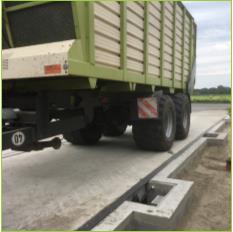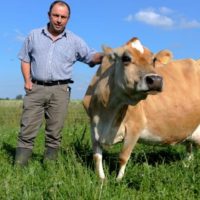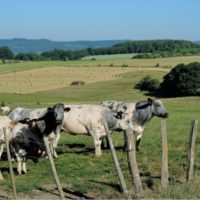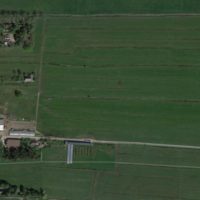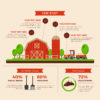Description
Background
Knowledge of the yield level is a basic prerequisite for optimum grassland management. The quantitative recording of grassland yields, especially on forage farms, is still not common practice due to the lack of weighing facilities, cost reasons and high time pressure during harvesting. Thus, there is no farm specific quantification of the harvest quantities.
Knowledge of the yield potential of the different grassland cuts is indispensable for optimum management of grassland on an area-specific basis and monitoring its success. Yield data and analyses of forage quality are the basis for successful forage management and a high-quality basic forage with a high milk yield. Only those who know their yields and forage qualities can make targeted and adapted forage and fertilisation planning possible and also get a precise overview of their forage and management costs. At the same time, an accurate recording of the yield makes possible this knowledge of the need for improvement measures. In addition, it provides the necessary information about the company’s own basic feed stocks, which can be used to quickly identify a feed shortage and react to it in good time with additional purchases. Exact recording of the crop quantities also makes it clear to practitioners how to approach nutrient flows and the documentation required, which will be more important than ever in the future.
Farmer’s motivations
The farmer is highly interested in the topic and put in a lot of effort and planning. The layout of the farm in this respect helped to implement the technique, because there is only one possible way from the fields towards the silo and this is where the scale was placed. This prevented harvest workers to miss scaling their load, even if they were under a lot of time pressure due to weather conditions. The scaling machinery was supplemented by IT-technology that enabled the harvest workers to match the weight with a specific site electronically without delay.
Detailed description
In order to generate the grassland and maize yields as accurately as possible, each wagon is recorded quantitatively and each field qualitatively, analysed and evaluated. The fresh grass sample is taken directly on the silo. A stationary scale is available for weighing. Tractors and shredders are each equipped with a GPS tracker in order to be able to trace routes after weighing. This enables the crop quantities to be allocated with unmistakable accuracy.
At the earliest six weeks after the weighing of the harvest quantities, the silages are again inspected for their quality and ingredients. Statements about the compaction work can also be made by calculating the storage density (TM kg/m³). These results are relevant for a precise calculation of the feed ration and for checking the silage management and success.
Results
By weighing and accurately recording the yields, the farmer can now optimise his areas in a targeted manner and has a very good overview. The amount of work, on the other hand, is very high, but in the long term production can be increased through optimisation. The fertilization can be optimally adapted to the nutrient depletion, thus costs can be saved through the purchase of mineral fertilizers. The farmer also has precise data for feeding through the analysis of his feed.
Adoption criteria
The innovation can be adopted by any farmer. However, there are quite high initial costs for the installation and purchase of the scale. Also during the harvest a person has to stand at the scale and take the samples from the silo.
Future prospects
In the future it will be more important than ever to know exactly how much yield is harvested per hectare. Just as important is knowledge of the ingredients for targeted fertilisation and feed planning. In order to make the weighing system known, an event on the farm would be useful.

